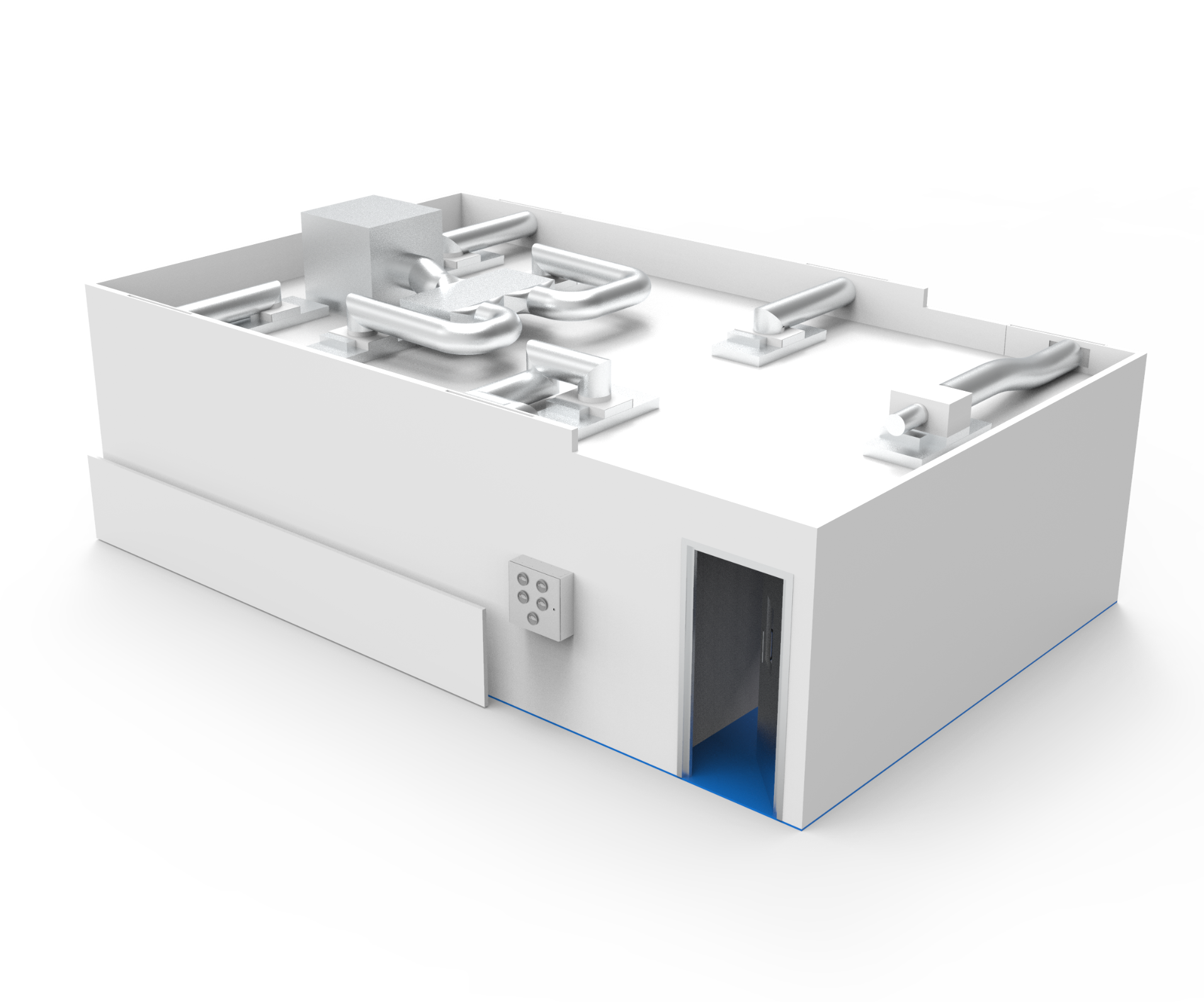The Most Common Questions Answered: Cleanrooms for Injection Moulding
Injection moulding in cleanrooms allows medical plastics to be produced in a controlled environment ensuring a high-quality product without fear of contamination. Whether you’re an expert or a novice in the world of cleanrooms, this can be a complicated process!
In this blog, Commissioning and Validation Manager, Mark Jackson answers the most common questions regarding the injection moulding process for medical plastics.
This article has also been featured in Medical Plastics News October/November/December 2024 issue.

Why do I Need a Cleanroom for Injection Moulding?
A cleanroom is necessary for injection moulding when the products being manufactured require an element of contamination control, where cleanliness, precision and compliance are closely regulated. Manufacturing products for the medical industry means the output of these processes often come into direct contact with the human body, so contamination control is of top priority.
Most cleanrooms intended for the manufacture of medical devices must comply with ISO Class 5 to Class 8 standards, however all active implantable medical devices and their accessories fall under the highest risk category (Class III), which means a GMP cleanroom may need to be used.
By manufacturing in a cleanroom environment, you ensure the process is free from contaminants that could compromise the quality, safety and functionality of the end product.
What are the Key Features I Need for an Injection Moulding Cleanroom?
The specific features of any cleanroom are dictated by variables such as available space, height restrictions, accessibility requirements, the need to be transportable and the overall processes undertaken within the cleanroom itself.
Here are some key features to consider when choosing an appropriate cleanroom for injection moulding:
Transportability
Does your cleanroom need to cover a specific section of machinery as part of the injection moulding process? Does the machine produce non-medical as well as medical components? If this is the case, then consider a softwall cleanroom on castors for ease of movement and transportability, enabling you to create a controlled environment when necessary.

Tool Changing
Flexibility is key for injection moulding manufacturing as one machine might be used to produce a range of different products. As such, accessibility is required to change the tool used to produce the parts. A transportable cleanroom can simply be moved to gain access to the tooling area, however, a more permanent structure requires a more innovative solution, such as a HEPA-lite™ canopy with a sliding filter unit to allow crane access from above.

Materials
Softwall cleanroom panels are often used in injection moulding to achieve an ISO Class environment and benefit from being lightweight, transportable and easy to construct. Hardwall panels accomplish a sturdier structure and have options for extras such as shelving units and transfer hatches. Monobloc wall panels provide further capacity for more stringent environmental control, however, come at a greater cost than Softwall or Hardwall panels and are less flexible in terms of accessibility.

Air Filtration & Ventilation
Cleanrooms for injection moulding machines often require the fan filter unit (FFU) to be located directly above the platen and moulding tool to ensure optimal filtration where it’s needed the most. This will influence the design and layout of your facility and will dictate the layout of machinery when inside the cleanroom.

Efficient Workflow
Anyone entering the cleanroom to operate machinery will need to enter a change area first, to ensure minimal contamination from the outside environment. Injection moulding machines often have a conveyor belt or shoot to facilitate the movement of the finished product, so your cleanroom process and workflow will need to take this into consideration to ensure that equipment and personnel flow follow a logical, contamination-reducing path.

How do I Ensure my Cleanroom is Compliant Throughout the Injection Moulding Process?
Ensuring compliance requires a combination of meticulous planning, regular monitoring and adherence to strict protocols throughout the entire lifecycle of the cleanroom.
The first stage of cleanroom compliance is before the construction begins. The development of a User Requirement Specification (URS) is critical for GMP cleanrooms, and must consider both regulatory and process requirements – what ISO classification are you required to work to, and do you have any process requirements, such as temperature or humidity control?
Regular validation and requalification are advised on all cleanrooms to ensure you remain compliant – the frequency of requalification will be determined by the regulatory standards your cleanroom adheres to.
In cases where a single injection moulding machine is used to produce multiple products, a clean environment may not be required for every product. Obtaining a particle counter is highly advised if your cleanroom is used intermittently as you will need to be able to measure the level of particles inside the cleanroom before production starts, ensuring compliance during use.
Ensuring the personnel operating the cleanroom environment are appropriately trained is a critical part of compliance. They will be responsible not only for adhering to strict cleanroom protocols such as gowning, day-to-day manufacturing procedures, entry and exit protocols and ongoing cleaning, but also maintaining proper documentation.
Summary
The answers to the above questions go some way in providing a clear understanding of why cleanrooms are vital in the injection moulding process, especially for high-precision industries, and how they contribute to product safety and quality.
Cleanrooms for Injection Moulding
Download our White Paper
Injection moulding in cleanrooms allows medical plastics to be produced in a controlled environment ensuring a high-quality product without fear of contamination. Manufacturing products for the medical industry means the output of these processes often come into direct contact with the human body, so contamination control is of top priority. This is where cleanrooms come in!



START A PROJECT WITH US
Our design and build specialists have experience working with customers in all kinds of industries on a global scale, achieving great results time and time again.
We’d love to work with you too!
CONTACT US